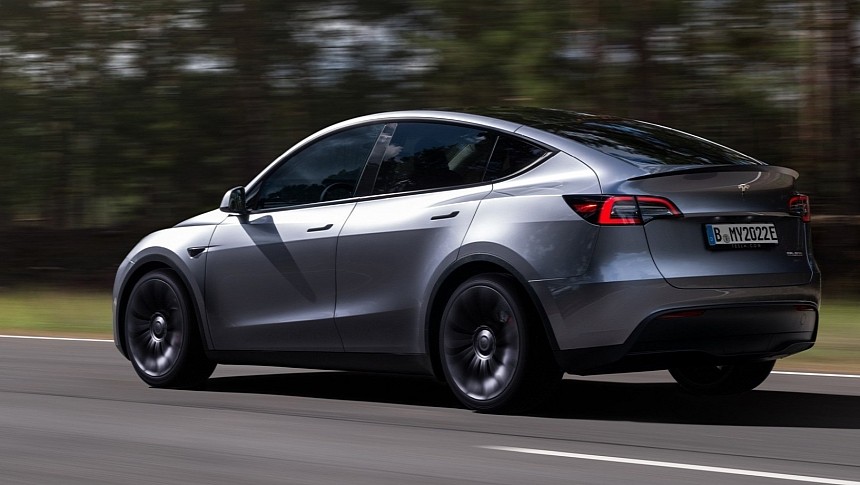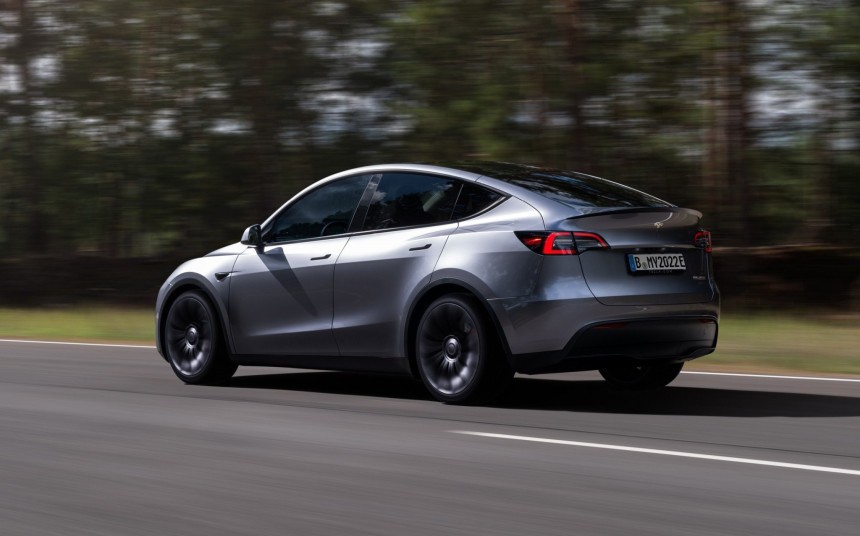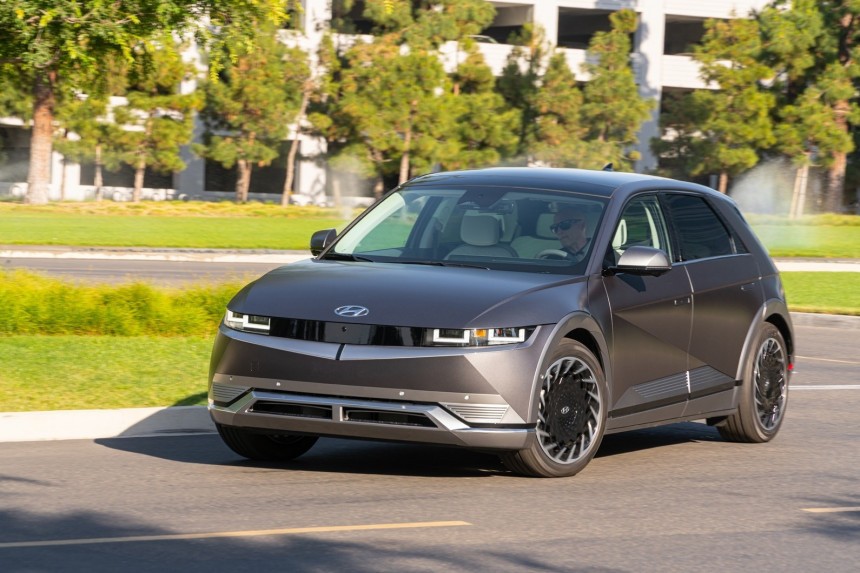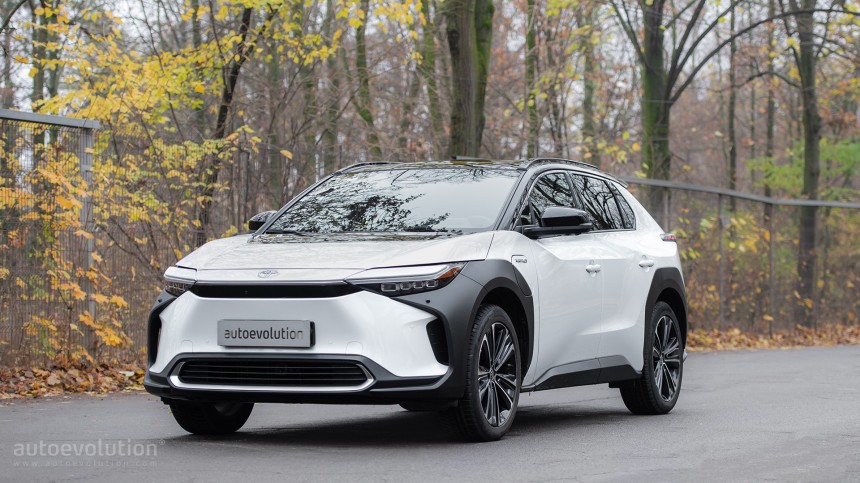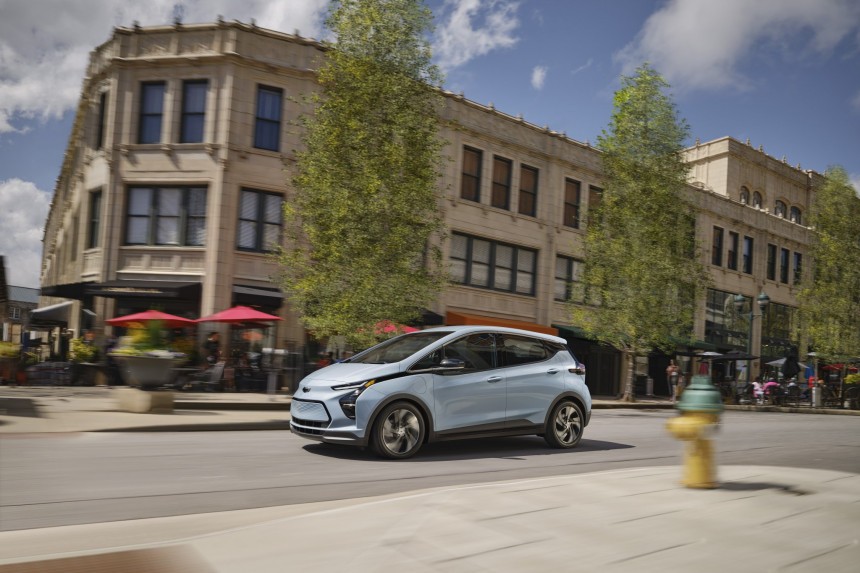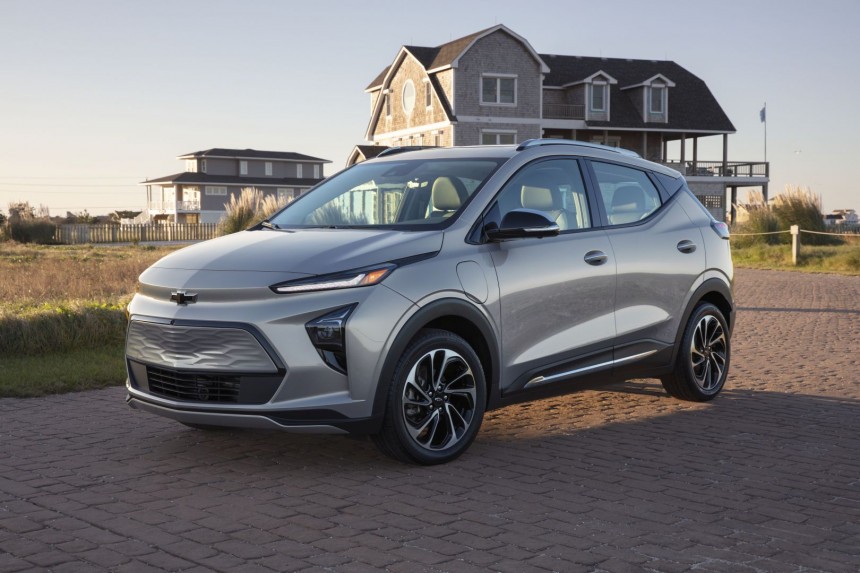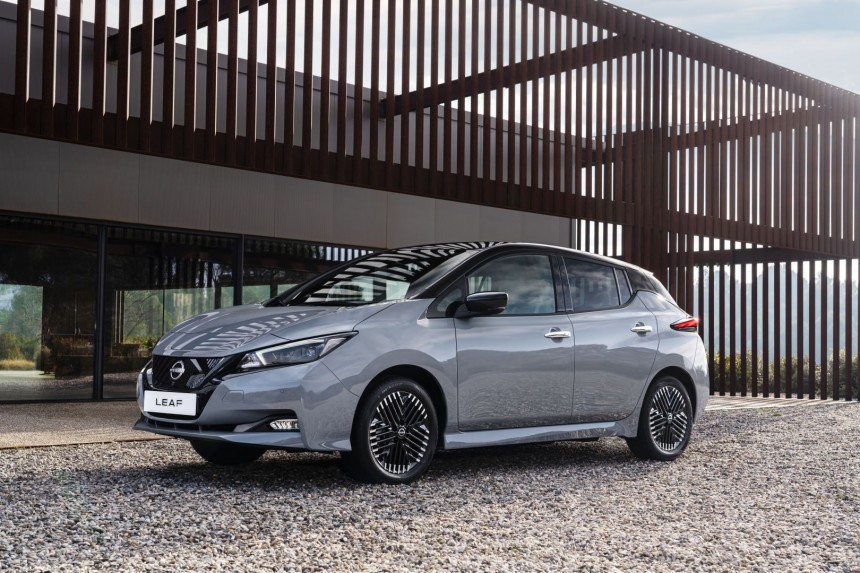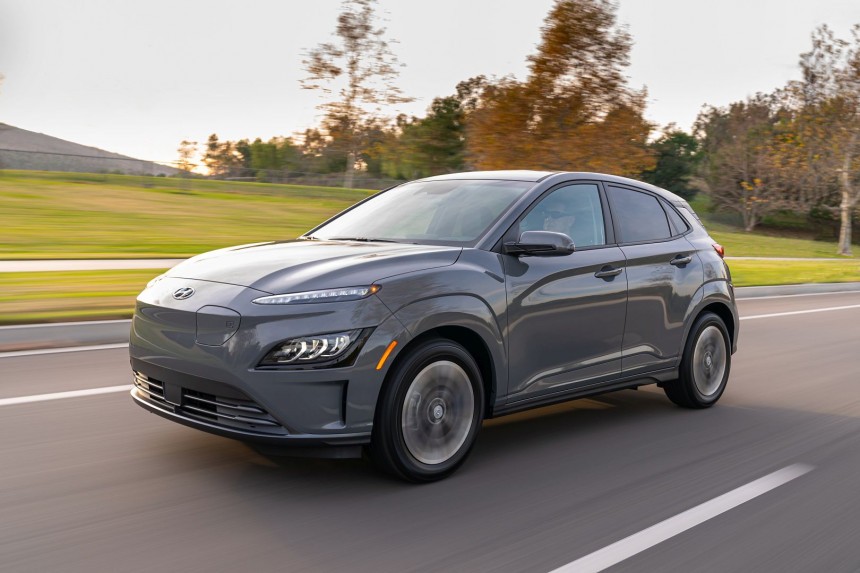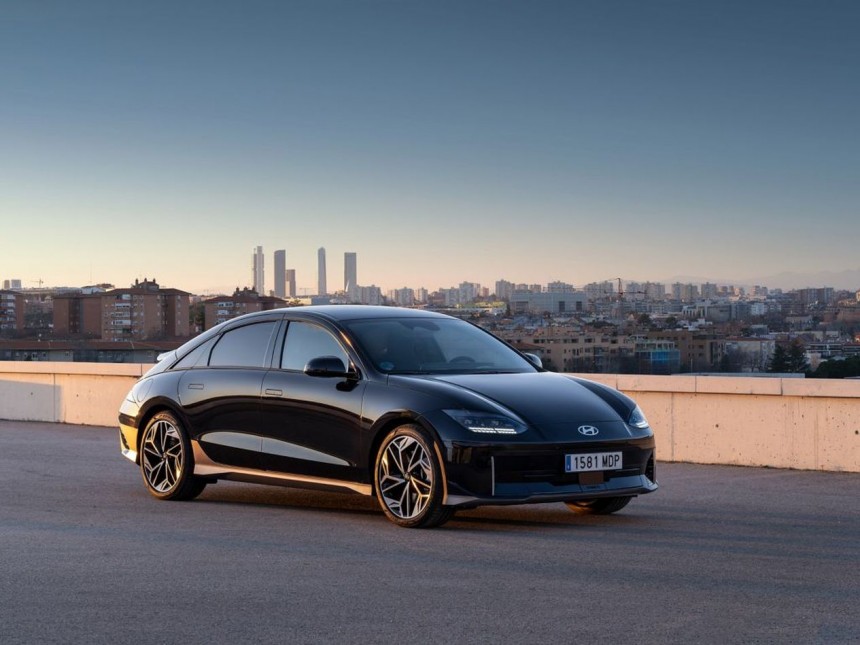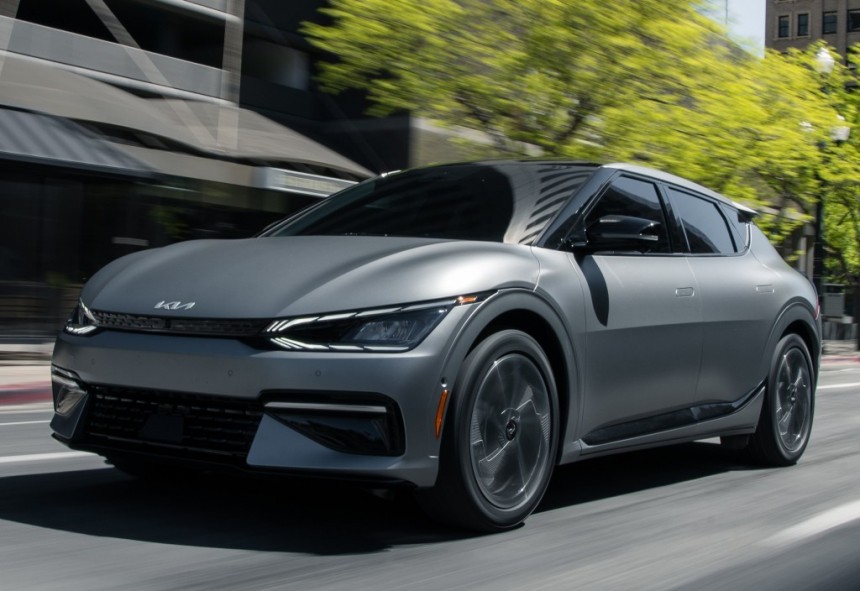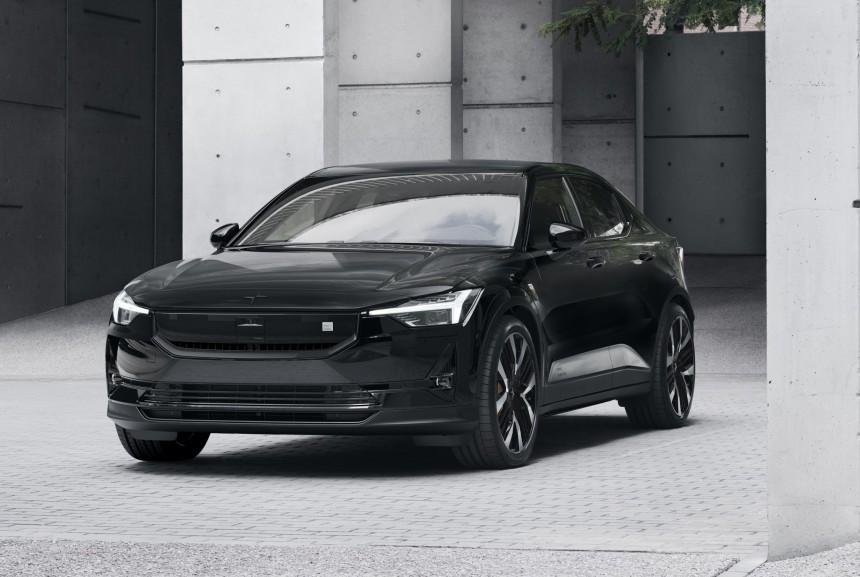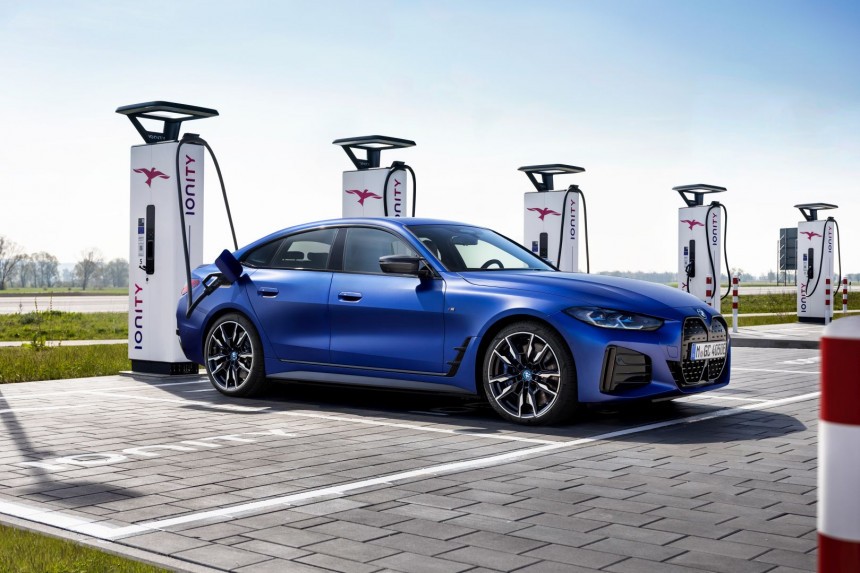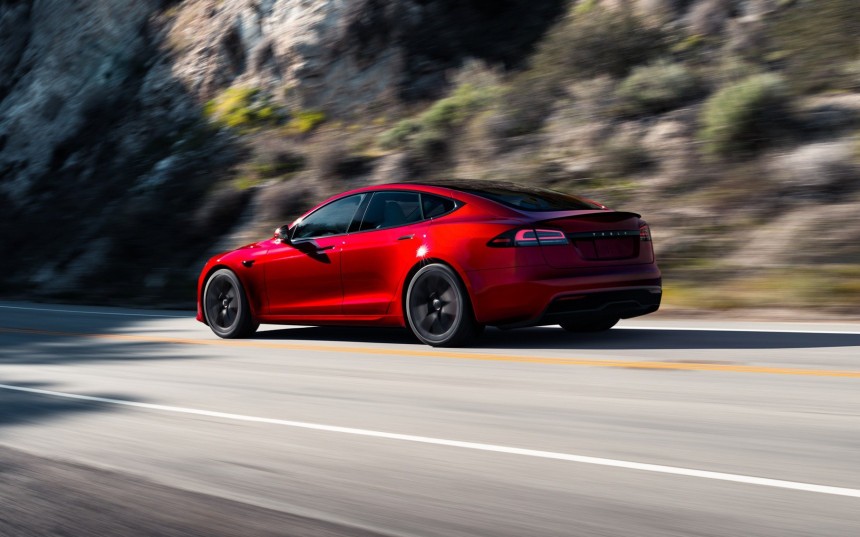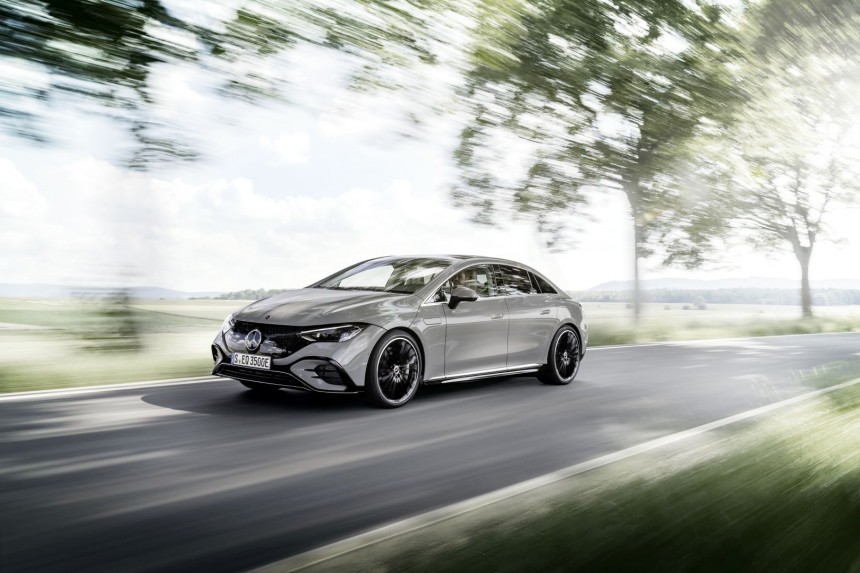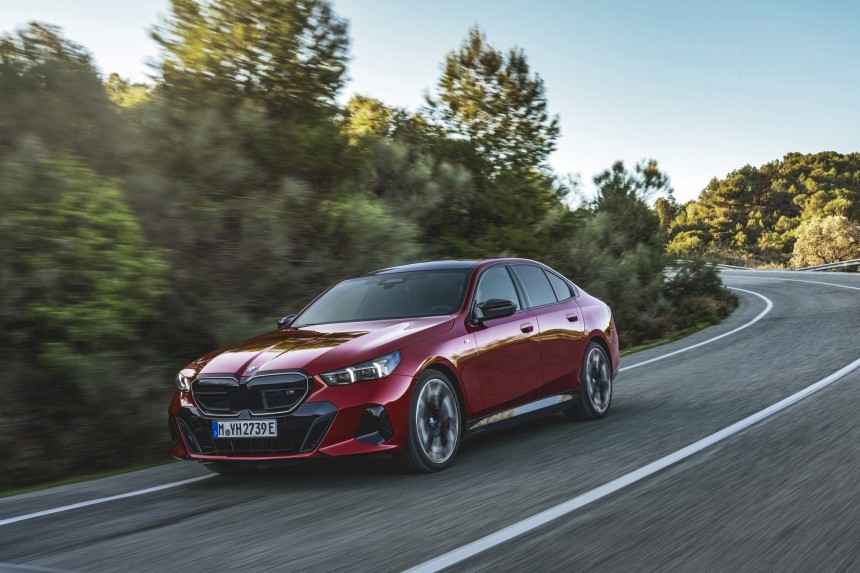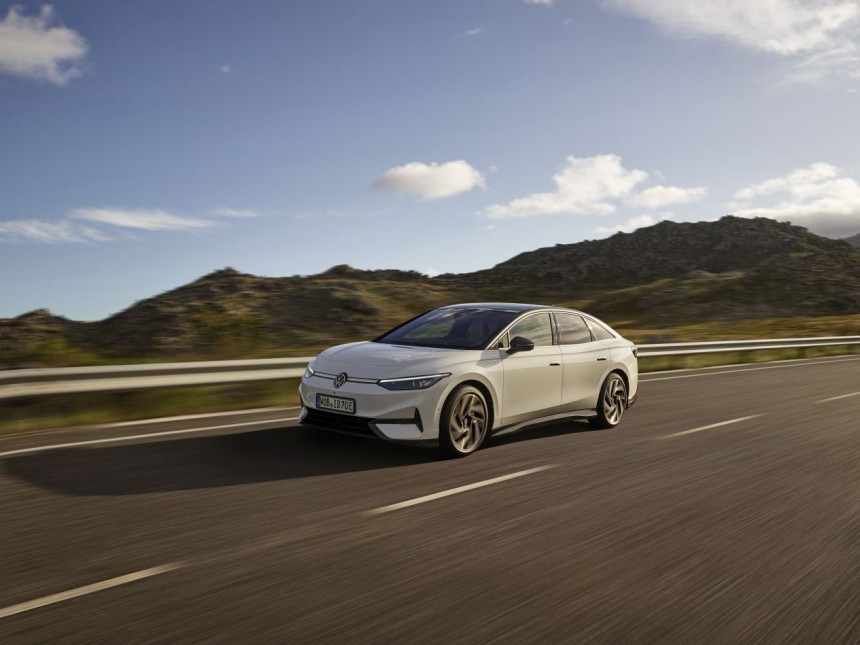Tesla Model 3 is great for first-time EV owners, although I must admit that not everyone is a Tesla fan. If you appreciate the advantages of owning an electric vehicle but don't want a Tesla Model 3, here are the best alternatives, depending on your reasons to avoid it.
Americans are warming up to owning an electric vehicle, and Tesla is naturally the first brand that crosses anyone's mind. People might have hesitated to consider an EV up until a few years ago, and Tesla was the only brand worth buying, despite its high prices. Today, the market is ripe with dozens of EV models, which means there's one for every budget, segment, and mindset.
Tesla itself has become more affordable due to massive price cuts this year. Considering the various tax credits and incentives available to EV buyers, it's hard not to notice that a Model 3 sells cheaper than most comparable ICE mid-size sedans. And the advantage of having the most extensive charging network at your disposal is hard to overlook. Thus, buying a Tesla Model 3 is a no-brainer.
Still, not everyone likes the Model 3; some because of its design, some because of the controversies around Tesla's CEO Elon Musk, and some for other reasons. Fret not, though: the EV market has become mature enough to offer alternatives for everyone. From the barebones Chevy Bolt, which will soon be discontinued, to the luxurious sedans in the executive class, there are plenty to choose from. And more are entering the market in the coming months.
Tesla Model 3 alternatives if you need more space
Power: 295-527 horsepower
Battery capacity: 67-75 kWh
Range: 279 – 330 miles
IRA tax credit: $7,500
If you just need more space and are satisfied with the overall Tesla ownership experience, the Model Y is your best bet. It's basically a Model 3 with a liftgate and more space inside the cabin and the trunk, so you’re not going to miss anything except up to a $7,500 price difference. Only you can tell if this is worth it.
Aside from this, the Tesla Model Y still offers a seamless charging experience thanks to Tesla’s Supercharger network, great software, and one of the best audio systems in the business. Access to the FSD Beta program is a strong incentive for many people, as it's arguably the best driver assist package on the market.
The base version Model Y AWD is built with the new 4680 cells at Giga Texas, and based on industry insiders, it features a 67-kWh capacity (Tesla doesn’t offer this information). It still provides a decent 279-mile (449-km) range, not much more than the Model 3 RWD with an LFP battery pack. Still, for less than $3,000 extra, you can upgrade to the Long Range variant, which features a 75-kWh battery and delivers the maximum 330-mile (531-km) range.
Pros: supercar-like performance for the top trim, great software, access to FSD Beta
Cons: none, really, if you can afford to pay a tad more
Power: 266-480 horsepower
Battery capacity: 70-91 kWh
Range: 224 – 312 miles
IRA tax credit: $3,750
Ford made a genius move when it connected its first electric vehicle to the Mustang heritage. Ford’s electric crossover impressed with its sleek design and good performance, although in all versions except GT, the name doesn't reflect its character. Still, it's a solid car and the go-to choice for anyone wanting an electric vehicle outside Tesla’s ecosystem.
The Mustang Mach-E is available in four trims – Select, Premium, California Route 1, and GT. The first two can be ordered with either rear-wheel or all-wheel drive, whereas the top two configurations are only available with eAWD. Even in its base configuration, the electric 'Stang can do 0-60 in 5.8 seconds and drive up to 247 miles (398 km) on a charge.
Ford's crossover has a higher towing capacity than the Model 3, at 3,300 lbs. (1,500 kg) versus 2,200 lbs. (1,000 kg), and offers more cargo space, between 29.7 and 59.7 cubic feet (841-1,690 liters). It rides higher, which should be an advantage for some people and is, of course, more practical than a Model 3 in every aspect except charging.
Pros: fun to drive, brisk performance in the GT trim, good range
Cons: heavy, less agile around corners, infotainments system needs time getting used to
Power: 168-320 horsepower
Battery capacity: 58-77.4 kWh
Range: 220 – 303 miles
IRA tax credit: No
Ioniq 5 is Hyundai's wonder boy and the first model built on the dedicated E-GMP platform. It's one of the few electric vehicles on the market with an 800-volt architecture, which is unusual in this price range. The Ioniq 5 sits in between segments, with the shape of a compact hatchback but the size and stance of a larger crossover. Hyundai opted for a blend between retro and modern, with a design that reminds me of the Pony but with all the cool technologies of tomorrow.
The Hyundai Ioniq 5 surprises with a spacious cabin, which is enough to make it a great alternative to the Tesla Model 3. Still, it's nowhere near as sporty, with a significantly weaker electric motor and lackluster performance, especially in its base version. Range-wise, the 58-kWh base battery pack will not get you that far, at 220 miles (354 km) tops. My advice is to opt for the bigger battery pack and enjoy up to 303 miles (488 km) in the RWD variant.
Although it doesn't impress in power and range, the Ioniq 5 has the upper hand in charging performance, thanks to its 800-volt architecture. When hooked to a compatible charger, the Korean EV can charge from 10% to 80% in about 18 minutes. The Ioniq 5 is also appreciated as more comfortable than the Tesla Model 3, with a softer suspension and a more relaxed ride.
Pros: very short charging times, comfortable suspension, attractive design
Cons: power, range, and performance for the base version, no IRA tax credit
Power: 201-214 horsepower
Battery capacity: 71.4-72.8 kWh
Range: 228-252 miles
IRA tax credit: No
The bZ4X is Toyota's first attempt (and not very successful at that) to offer an electric vehicle. The electric crossover suffered a humiliating recall, followed by a long period when no car was produced because the wheels kept falling off. Still, Toyota appears to have solved the problem, and the bZ4X could prove a good alternative to the Tesla Model 3.
There is little difference in power, performance, and range between the front-wheel drive and the all-wheel drive variants. Still, if the budget allows, opt for the FWD variants, which offer better range. Toyota is overestimating it, and independent tests showed that the bZ4X is struggling to achieve its estimated EPA figures, especially in cold weather.
The Toyota bZ4X is equipped with the Toyota Safety Sense 3.0 driver assist package. This can offer essential assistance features, including automatic emergency braking, lane centering, and adaptive cruise control. Still, this is no match for Tesla's FSD Beta or even Autopilot.
Pros: spacious cabin, good comfort, good build quality
Cons: noisy cabin, deceptive range, long charging times
Tesla Model 3 alternatives for budget-conscious buyers
Power: 200 horsepower
Battery capacity: 65 kWh
Range: 259 miles
IRA tax credit: $7,500
The Chevrolet Bolt EV and its bigger brother Bolt EUV have had an explosive history because of their defective batteries. Chevrolet reluctantly recalled all the cars produced to replace their batteries, although it recently announced that a replacement is no longer guaranteed. Instead, Chevrolet would install software to monitor the battery and warn if it needs replacement.
After production restarted last year, the Chevrolet Bolt EV became the cheapest electric vehicle you can buy new in the US. Chevrolet is basically giving away the Bolt at its $25,900 MSRP, and that is even before you count the $7,500 IRA tax credit if you qualify. The Bolt EV shows its aging design, with little power and an especially low charging speed. This is because charging power tops at 50 kW.
Still, it has a decent range of 259 miles (417 km), making it an excellent choice for trips around town. Road trips are not advised, considering the 50 kW fast-charging limit. It takes about 30 minutes to add 100 miles to the battery. Other than that, the Chevy Bolt EV offers plenty of space for its small footprint, making it the perfect choice for those who don't want to spend more for a Tesla Model 3.
Pros: affordable, decent performance and range, still looking good
Cons: slow charging speeds, aging technology, bad image due to the fires
Power: 200 horsepower
Battery capacity: 65 kWh
Range: 247 miles
IRA tax credit: $7,500
The Chevrolet Bolt EUV is only slightly more expensive than its brother Bolt EV but offers improved interior space and a crossover form factor. Surprisingly, it has a smaller trunk, albeit by 0.1 cu-ft (3 liters). Technical specifications are mostly the same, although shape penalizes range and 0-60 time.
Technology-wise, the main difference between the Bolt EUV and the Bolt EV is that the latter can only be specced with adaptive cruise control ($495). The Bolt EUV, on the other hand, can be had with the Super Cruise "hands-free" driver assistance package ($2,200) if you opt for the top Premier trim.
If you fancy one of these cheap-as-chips electric crossovers from Chevrolet, you better hurry because GM announced it would close the order books on August 17. This allows Chevrolet to fulfill all the orders before production end, expected on November 7.
Pros: hard-to-resist price, decent performance and range, Super Cruise driver assistance package
Cons: aging technology, slow charging speeds, bad image due to battery fires
Power: 148-215 horsepower
Battery capacity: 40-60 kWh
Range: 149-212 miles
IRA tax credit: No
A few years ago, the Nissan Leaf was the first thing crossing one's mind when it came to electric vehicles. This could've been great for Nissan, but the Japanese carmaker fell for Toyota's tricks and was left behind by the competition. Now, Leaf is just a name for a low-range EV with few things to show off except the affordable price. Mind you, this only stands for the 40-kWh variant, which is even worse than the Chevy Bolt above.
The range is also much less than the Tesla Model 3 and even the Chevy Bolt, with only 149 miles (240 km) for the 40-kWh battery. If you need to go further than your neighbor's house, you should opt for the 60-kWh pack, although this would cost you. At more than $36,000 and with no tax credit, there's little to recommend the Leaf.
One thing that sets it apart from the rest of the EV crowd is that it's the only model in the US with a Vehicle-to-Grid (V2G) capability. This means that it can be used as a battery backup and also send energy to the grid to make use of the favorable rates, provided you have a V2G-compatible wall charger.
Pros: affordable price for the base version, V2G capability
Cons: disappointing range, lackluster performance
Power: 201 horsepower
Battery capacity: 64.8 kWh
Range: 258 miles
IRA tax credit: No
Hyundai is preparing to replace the first-generation Kona Electric toward the end of 2023, but until then, the entry-level EV remains a solid proposition. Depending on the trim, the Kona Electric costs between $33,550 (SE) and $41,550 (Limited). Still, the Hyundai crossover doesn't qualify for the IRA tax credit.
At the end of its life, Kona Electric is only available with the bigger 64.8-kWh battery and the 201-horsepower electric motor. That's a good thing because it offers decent range and performance for the price. The quality is also good, although some might complain about the limited cabin space.
Although the Hyundai Kona Electric doesn't benefit from the E-GMP advantages, it still offers decent charging speed on the 400-volt architecture. If you can postpone the purchase, it's worth waiting a few months as the all-new 2024 Hyundai Kona Electric is just around the corner.
Pros: Comfortable cabin, plenty of standard features, decent performance for the price
Cons: Limited interior space, no AWD option, limited charging speeds
Tesla Model 3 alternatives for nonconformists
Power: 149-320 horsepower
Battery capacity: 53-77.4 kWh
Range: 240-361 miles
IRA tax credit: No
The second EV built on the dedicated electric platform E-GMP is priced almost identical to its brother Ioniq 5. This is squarely pitted against the Tesla Model 3, and Hyundai made sure it has all the qualities needed to challenge the market segment's leader. Although it's not technically different from its brother, the Ioniq 6 boasts an improved range thanks to one of the most aerodynamic shapes on the market.
This is why the Ioniq 6 is the only EV in the Model 3's segment that can match it and surpass it in terms of range. When configured with the bigger 77.4 battery pack and RWD (225 horsepower), the Ioniq 6 can go up to 361 miles (581 km) on a charge. Thanks to the 800-volt electric architecture, it can also recharge quickly, with 18 minutes needed to reach 80% when hooked to a 350-kW charger.
Despite its peculiar design, which might not suit everyone, the Hyundai Ioniq 6 is sleek and modern, with more than a decent space for passengers and their luggage. The Korean electric sedan is available in four trims – Standard Range, SE, SEL, and Limited, and offers interesting features such as bi-directional charging and an impressive driver-assistant package.
Pros: great range, fast charging, spacious cabin, very good ride and comfort
Cons: limited rear headroom, controversial design, relatively small trunk
Power: 167-576 horsepower
Battery capacity: 58-77.4 kWh
Range: 206-310 miles
IRA tax credit: No
The EV6 is Kia's interpretation of a sporty electric crossover built on the E-GMP platform. This is similar in many ways to the Hyundai Ioniq 5 but is also pitted as a sportier offering. The Kia EV6 is the only E-GMP-based model available as an impressive 576-horsepower GT variant. This is more than the Tesla Model 3 Performance (527 horsepower), allowing it to reach 60 mph in 3.4 seconds, still 0.3 seconds later than the fastest Model 3 variant.
The range is another department where the Kia EV6 GT lags behind Tesla, but not by much. Like its brothers, it can recoup range very fast, thanks to the 800-volt electrical system. The Kia EV6 has an exciting design, which trumps the bland appearance of the Model 3, although some people might argue that the price is too high. Indeed, despite recent price cuts, the Kia EV6 is more expensive than Tesla's sedan, especially in its most powerful variant.
It also boasts an arguably better-quality interior and, depending on the trim, even more equipment. The Kia EV6 offers decent space inside the cabin, although not as much as the competition, especially in the trunk. The rear visibility is also restricted.
Pros: impressive performance for the EV6 GT, decent range, fast charging capabilities
Cons: limited cabin and cargo space, higher prices, not very efficient in cold temperatures
Power: 299-455 horsepower
Battery capacity: 78-82 kWh
Range: 247-320 miles
IRA tax credit: No
Polestar 2 was the brand's launch model in the US market and was developed from the get-go as a Model 3 competitor. It might not have the volumes to challenge its dominance, but it sure doesn't lack in sex appeal and image. The Swedish carmaker has outdone itself, making the Polestar 2 a worthy Tesla Model 3 alternative.
The Polestar 2 is offered in Single and Dual-Motor variants, with a Long Range option based on the former. This can go as far as 320 miles (515 km) on a charge, thanks to a bigger 82-kWh battery pack, almost matching the 333-mile (536-km) range of the Tesla Model 3 Long Range AWD. The Model 3 still has the upper hand, since that figure is achieved in a dual-motor configuration.
The Polestar 2 is not as powerful or fast as the Tesla electric sedans except for the base version. Still, it compensates with better build quality and a more luxurious interior. Thanks to the huge liftgate, the Polestar 2 is also a lot more practical than the Tesla Model 3. The space for the rear passengers could be better, though.
Pros: impressive design, well-equipped interior, great technological package
Cons: range could be better, pricy options, limited rear headroom
Power: 282-536 horsepower
Battery capacity: 84 kWh
Range: 227-301 miles
IRA tax credit: No
After the controversial i3, BMW took a more mainstream course and offered electric variants of its bread-and-butter models. The BMW i4 is the electric version of the BMW 4 Series Gran Coupe, offering a luxurious interior in a sporty four-door coupe package. Spec by spec, the BMW i4 was clearly developed to give Tesla Model 3 a run for its money.
Although it's more expensive, we forgive it, as no BMW was ever supposed to be affordable. It's a statement and priced as such. Still, is it worth the money? It depends. No Tesla has the BMW image, and if that's important to you, the i4 is your ride. Never mind that the Bimmer has a slightly lower range, and the performance is not quite in the Tesla territory, despite the similar power levels. This shows that the i4 is heavier, which counts when measuring performance.
Still, the BMW i4 is arguably a better car, even if it's not necessarily a better EV. It is guaranteed to turn more heads than the Tesla Model 3, and it also drives better. This is what BMW knows best after perfecting the recipe for decades. Tesla still has work to do in this department, being both less comfortable and less engaging. After all, it's built on the idea that no human should drive it.
Pros: great image, luxurious interior, impressive drive
Cons: expensive, heavy, not as fast as Tesla Model 3
Tesla Model 3 alternatives when money doesn't matter
Power: 670-1,020 horsepower
Battery capacity: 100 kWh
Range: 396-405 miles
IRA tax credit: $7,500
When money's not a problem, you can make some wild choices and completely forget you started with the Tesla Model 3. If you're looking for an electric sedan, it's hard to overlook the Tesla Model S. The most technologically-advanced Tesla on the market today comes with great features and an impressive range that few other models can match.
The space inside is vast, and the liftgate lets you transport big objects without worrying about the tight opening. Recently updated, the Model S also comes with the latest Hardware 4 computer and sensors, although it's still not quite ready to run the FSD Beta software.
Even in its base AWD version, the Tesla Model S is a beast, with a 0-60 time of only 3.1 seconds, the same as the Model 3 Performance. If you throw in $40,000 more for the Plaid version plus the Track package, you can unlock the 200-mph top speed. Either way, the Tesla Model S Plaid can do 0-60 in 1.99 seconds (with rollout subtracted).
Pros: great range, supercar performance, plenty of space, luxury features
Cons: aging design, HW4 is still not fully supported by the software
Power: 288-617 horsepower
Battery capacity: 90.6 kWh
Range: 225-305 miles
IRA tax credit: no
The EQE is only the second electric sedan in Mercedes-Benz's lineup, which also includes five SUVs and one van. Launched in 2021, the EQE Sedan is a serious competitor to the Tesla Model S, especially in the feel-good department. Sadly, it lags behind Tesla in range and performance. Even the sporty Mercedes-AMG EQE Sedan is no match for the base version Tesla Model S AWD, which is more powerful and faster.
If you're not looking for the performance figures to brag about, the Mercedes-Benz EQE is a solid offering with some of the best fit and finish qualities in the industry. While the design did not impress many critics, and some consider it bland, the luxurious cabin, with its wrap-around screens and lush materials, will surely make some heads spin.
The base version is rear-wheel drive and will go easier on the battery, allowing the maximum 305-mile (491-km) range. Still, with only 288 horsepower, it needs 6.2 seconds to get from zero to 60 mph, which for many is excruciatingly slow. On the plus side, the ride is refined and the suspension is comfortable, as expected from a Mercedes.
Pros: bragging rights, reasonable performance for the top versions, luxurious and high-tech cabin
Cons: expensive, disappointing performance for the base version
Power: 335-590 horsepower
Battery capacity: 84.3 kWh
Range: 256-295 miles
IRA tax credit: no
BMW launched the i5 at the end of May, and the luxury executive sedan is still not ready to configure. BMW has offered a price range and preliminary technical data, so you can already pre-order the i5, but the final specifications and features are still unknown. Still, the electric version of the BMW 5 Series Sedan should prove a great choice if money is of no concern.
To everyone's relief, the Germans have toned down the kidney grille size, making the BMW i5 a gorgeous appearance. Packed with technology, the BMW will not disappoint. As an EV, it represents the pinnacle of Bavarian technology, with reasonable range, fast charging times, and probably the best efficiency for an EV model produced by a traditional carmaker.
While not as impressive as the Mercedes-Benz EQE, the BMW i5's cockpit is still a masterpiece. It integrates a 12.3-inch information display and a 14.9-inch control display behind a common glass surface curved toward the driver. A wide range of driver-assistance features are available.
Pros: outstanding performance, BMW agility, high efficiency, packed with technology
Cons: none that I can think of without driving it
Power: up to 282 horsepower
Battery capacity: 77-86 kWh
Range: 320 miles (estimated)
IRA tax credit: no
The Volkswagen ID.7 is the electric spiritual successor to the Passat and will probably be an excellent alternative to the Tesla Model 3. The only thing that might keep it from becoming a bestseller is its aging MEB architecture and the notorious software problems that plagued MEB vehicles in the past. If Volkswagen gets it right, including the pricing, the ID.7 should prove a hit with buyers, despite the fact that the executive sedan segment continues to shrink.
Volkswagen hasn't offered many technical details and commercial information, so many of the ID. 7's specifications are estimated based on other MEB-based EVs, including the ID.4. The German carmaker boasts unparalleled efficiency thanks to a new drive unit and state-of-the-art aerodynamics. Volkswagen promised the ID.7 would go as far as 435 miles (700 km) on a charge, although this is based on the less realistic European WLTP cycle. I estimate that the ID.7 could reach 320 miles EPA range, which is still a respectable figure.
The ID.7 should be quite practical despite its four-door-coupe shape. At 228 inches (2,966 mm), the wheelbase is almost as long as that of the ID. Buzz, ensuring the passengers have plenty of space. The cargo area has a capacity of 18.8 cubic feet (533 liters), which can be further expanded by folding down the rear seats.
Pros: good space for passengers and cargo, high built quality, impressive range for an MEB vehicle
Cons: aging MEB architecture, high price, uninspiring design
Tesla itself has become more affordable due to massive price cuts this year. Considering the various tax credits and incentives available to EV buyers, it's hard not to notice that a Model 3 sells cheaper than most comparable ICE mid-size sedans. And the advantage of having the most extensive charging network at your disposal is hard to overlook. Thus, buying a Tesla Model 3 is a no-brainer.
Still, not everyone likes the Model 3; some because of its design, some because of the controversies around Tesla's CEO Elon Musk, and some for other reasons. Fret not, though: the EV market has become mature enough to offer alternatives for everyone. From the barebones Chevy Bolt, which will soon be discontinued, to the luxurious sedans in the executive class, there are plenty to choose from. And more are entering the market in the coming months.
Tesla Model 3 alternatives if you need more space
1. Tesla Model Y
Price: $47,740-$54,490Power: 295-527 horsepower
Battery capacity: 67-75 kWh
Range: 279 – 330 miles
IRA tax credit: $7,500
Aside from this, the Tesla Model Y still offers a seamless charging experience thanks to Tesla’s Supercharger network, great software, and one of the best audio systems in the business. Access to the FSD Beta program is a strong incentive for many people, as it's arguably the best driver assist package on the market.
The base version Model Y AWD is built with the new 4680 cells at Giga Texas, and based on industry insiders, it features a 67-kWh capacity (Tesla doesn’t offer this information). It still provides a decent 279-mile (449-km) range, not much more than the Model 3 RWD with an LFP battery pack. Still, for less than $3,000 extra, you can upgrade to the Long Range variant, which features a 75-kWh battery and delivers the maximum 330-mile (531-km) range.
Pros: supercar-like performance for the top trim, great software, access to FSD Beta
Cons: none, really, if you can afford to pay a tad more
2. Ford Mustang Mach-E
Price: $42,995-$59,995Power: 266-480 horsepower
Battery capacity: 70-91 kWh
Range: 224 – 312 miles
IRA tax credit: $3,750
The Mustang Mach-E is available in four trims – Select, Premium, California Route 1, and GT. The first two can be ordered with either rear-wheel or all-wheel drive, whereas the top two configurations are only available with eAWD. Even in its base configuration, the electric 'Stang can do 0-60 in 5.8 seconds and drive up to 247 miles (398 km) on a charge.
Ford's crossover has a higher towing capacity than the Model 3, at 3,300 lbs. (1,500 kg) versus 2,200 lbs. (1,000 kg), and offers more cargo space, between 29.7 and 59.7 cubic feet (841-1,690 liters). It rides higher, which should be an advantage for some people and is, of course, more practical than a Model 3 in every aspect except charging.
Pros: fun to drive, brisk performance in the GT trim, good range
Cons: heavy, less agile around corners, infotainments system needs time getting used to
3. Hyundai Ioniq 5
Price: $41,450-$52,600Power: 168-320 horsepower
Battery capacity: 58-77.4 kWh
Range: 220 – 303 miles
IRA tax credit: No
The Hyundai Ioniq 5 surprises with a spacious cabin, which is enough to make it a great alternative to the Tesla Model 3. Still, it's nowhere near as sporty, with a significantly weaker electric motor and lackluster performance, especially in its base version. Range-wise, the 58-kWh base battery pack will not get you that far, at 220 miles (354 km) tops. My advice is to opt for the bigger battery pack and enjoy up to 303 miles (488 km) in the RWD variant.
Although it doesn't impress in power and range, the Ioniq 5 has the upper hand in charging performance, thanks to its 800-volt architecture. When hooked to a compatible charger, the Korean EV can charge from 10% to 80% in about 18 minutes. The Ioniq 5 is also appreciated as more comfortable than the Tesla Model 3, with a softer suspension and a more relaxed ride.
Pros: very short charging times, comfortable suspension, attractive design
Cons: power, range, and performance for the base version, no IRA tax credit
4. Toyota bZ4X
Price: $42,000-$48,780Power: 201-214 horsepower
Battery capacity: 71.4-72.8 kWh
Range: 228-252 miles
IRA tax credit: No
There is little difference in power, performance, and range between the front-wheel drive and the all-wheel drive variants. Still, if the budget allows, opt for the FWD variants, which offer better range. Toyota is overestimating it, and independent tests showed that the bZ4X is struggling to achieve its estimated EPA figures, especially in cold weather.
The Toyota bZ4X is equipped with the Toyota Safety Sense 3.0 driver assist package. This can offer essential assistance features, including automatic emergency braking, lane centering, and adaptive cruise control. Still, this is no match for Tesla's FSD Beta or even Autopilot.
Pros: spacious cabin, good comfort, good build quality
Cons: noisy cabin, deceptive range, long charging times
Tesla Model 3 alternatives for budget-conscious buyers
5. Chevrolet Bolt EV
Price: $26,500-$29,700Power: 200 horsepower
Battery capacity: 65 kWh
Range: 259 miles
IRA tax credit: $7,500
After production restarted last year, the Chevrolet Bolt EV became the cheapest electric vehicle you can buy new in the US. Chevrolet is basically giving away the Bolt at its $25,900 MSRP, and that is even before you count the $7,500 IRA tax credit if you qualify. The Bolt EV shows its aging design, with little power and an especially low charging speed. This is because charging power tops at 50 kW.
Still, it has a decent range of 259 miles (417 km), making it an excellent choice for trips around town. Road trips are not advised, considering the 50 kW fast-charging limit. It takes about 30 minutes to add 100 miles to the battery. Other than that, the Chevy Bolt EV offers plenty of space for its small footprint, making it the perfect choice for those who don't want to spend more for a Tesla Model 3.
Pros: affordable, decent performance and range, still looking good
Cons: slow charging speeds, aging technology, bad image due to the fires
6. Bolt EUV
Price: $27,800-$32,795Power: 200 horsepower
Battery capacity: 65 kWh
Range: 247 miles
IRA tax credit: $7,500
Technology-wise, the main difference between the Bolt EUV and the Bolt EV is that the latter can only be specced with adaptive cruise control ($495). The Bolt EUV, on the other hand, can be had with the Super Cruise "hands-free" driver assistance package ($2,200) if you opt for the top Premier trim.
If you fancy one of these cheap-as-chips electric crossovers from Chevrolet, you better hurry because GM announced it would close the order books on August 17. This allows Chevrolet to fulfill all the orders before production end, expected on November 7.
Pros: hard-to-resist price, decent performance and range, Super Cruise driver assistance package
Cons: aging technology, slow charging speeds, bad image due to battery fires
7. Nissan Leaf
Price: $28,040-$36,040Power: 148-215 horsepower
Battery capacity: 40-60 kWh
Range: 149-212 miles
IRA tax credit: No
The range is also much less than the Tesla Model 3 and even the Chevy Bolt, with only 149 miles (240 km) for the 40-kWh battery. If you need to go further than your neighbor's house, you should opt for the 60-kWh pack, although this would cost you. At more than $36,000 and with no tax credit, there's little to recommend the Leaf.
One thing that sets it apart from the rest of the EV crowd is that it's the only model in the US with a Vehicle-to-Grid (V2G) capability. This means that it can be used as a battery backup and also send energy to the grid to make use of the favorable rates, provided you have a V2G-compatible wall charger.
Pros: affordable price for the base version, V2G capability
Cons: disappointing range, lackluster performance
8. Hyundai Kona Electric
Price: $33,550-$41,550Power: 201 horsepower
Battery capacity: 64.8 kWh
Range: 258 miles
IRA tax credit: No
At the end of its life, Kona Electric is only available with the bigger 64.8-kWh battery and the 201-horsepower electric motor. That's a good thing because it offers decent range and performance for the price. The quality is also good, although some might complain about the limited cabin space.
Although the Hyundai Kona Electric doesn't benefit from the E-GMP advantages, it still offers decent charging speed on the 400-volt architecture. If you can postpone the purchase, it's worth waiting a few months as the all-new 2024 Hyundai Kona Electric is just around the corner.
Pros: Comfortable cabin, plenty of standard features, decent performance for the price
Cons: Limited interior space, no AWD option, limited charging speeds
Tesla Model 3 alternatives for nonconformists
9. Hyundai Ioniq 6
Price: $41,600-$52,600Power: 149-320 horsepower
Battery capacity: 53-77.4 kWh
Range: 240-361 miles
IRA tax credit: No
This is why the Ioniq 6 is the only EV in the Model 3's segment that can match it and surpass it in terms of range. When configured with the bigger 77.4 battery pack and RWD (225 horsepower), the Ioniq 6 can go up to 361 miles (581 km) on a charge. Thanks to the 800-volt electric architecture, it can also recharge quickly, with 18 minutes needed to reach 80% when hooked to a 350-kW charger.
Despite its peculiar design, which might not suit everyone, the Hyundai Ioniq 6 is sleek and modern, with more than a decent space for passengers and their luggage. The Korean electric sedan is available in four trims – Standard Range, SE, SEL, and Limited, and offers interesting features such as bi-directional charging and an impressive driver-assistant package.
Pros: great range, fast charging, spacious cabin, very good ride and comfort
Cons: limited rear headroom, controversial design, relatively small trunk
10. Kia EV6
Price: $42,600-$61,600Power: 167-576 horsepower
Battery capacity: 58-77.4 kWh
Range: 206-310 miles
IRA tax credit: No
The range is another department where the Kia EV6 GT lags behind Tesla, but not by much. Like its brothers, it can recoup range very fast, thanks to the 800-volt electrical system. The Kia EV6 has an exciting design, which trumps the bland appearance of the Model 3, although some people might argue that the price is too high. Indeed, despite recent price cuts, the Kia EV6 is more expensive than Tesla's sedan, especially in its most powerful variant.
It also boasts an arguably better-quality interior and, depending on the trim, even more equipment. The Kia EV6 offers decent space inside the cabin, although not as much as the competition, especially in the trunk. The rear visibility is also restricted.
Pros: impressive performance for the EV6 GT, decent range, fast charging capabilities
Cons: limited cabin and cargo space, higher prices, not very efficient in cold temperatures
11. Polestar 2
Price: $49,900-$55,300Power: 299-455 horsepower
Battery capacity: 78-82 kWh
Range: 247-320 miles
IRA tax credit: No
Polestar 2 was the brand's launch model in the US market and was developed from the get-go as a Model 3 competitor. It might not have the volumes to challenge its dominance, but it sure doesn't lack in sex appeal and image. The Swedish carmaker has outdone itself, making the Polestar 2 a worthy Tesla Model 3 alternative.
The Polestar 2 is offered in Single and Dual-Motor variants, with a Long Range option based on the former. This can go as far as 320 miles (515 km) on a charge, thanks to a bigger 82-kWh battery pack, almost matching the 333-mile (536-km) range of the Tesla Model 3 Long Range AWD. The Model 3 still has the upper hand, since that figure is achieved in a dual-motor configuration.
The Polestar 2 is not as powerful or fast as the Tesla electric sedans except for the base version. Still, it compensates with better build quality and a more luxurious interior. Thanks to the huge liftgate, the Polestar 2 is also a lot more practical than the Tesla Model 3. The space for the rear passengers could be better, though.
Pros: impressive design, well-equipped interior, great technological package
Cons: range could be better, pricy options, limited rear headroom
12. BMW i4
Price: $52,200-$69,700Power: 282-536 horsepower
Battery capacity: 84 kWh
Range: 227-301 miles
IRA tax credit: No
After the controversial i3, BMW took a more mainstream course and offered electric variants of its bread-and-butter models. The BMW i4 is the electric version of the BMW 4 Series Gran Coupe, offering a luxurious interior in a sporty four-door coupe package. Spec by spec, the BMW i4 was clearly developed to give Tesla Model 3 a run for its money.
Although it's more expensive, we forgive it, as no BMW was ever supposed to be affordable. It's a statement and priced as such. Still, is it worth the money? It depends. No Tesla has the BMW image, and if that's important to you, the i4 is your ride. Never mind that the Bimmer has a slightly lower range, and the performance is not quite in the Tesla territory, despite the similar power levels. This shows that the i4 is heavier, which counts when measuring performance.
Still, the BMW i4 is arguably a better car, even if it's not necessarily a better EV. It is guaranteed to turn more heads than the Tesla Model 3, and it also drives better. This is what BMW knows best after perfecting the recipe for decades. Tesla still has work to do in this department, being both less comfortable and less engaging. After all, it's built on the idea that no human should drive it.
Pros: great image, luxurious interior, impressive drive
Cons: expensive, heavy, not as fast as Tesla Model 3
Tesla Model 3 alternatives when money doesn't matter
13. Tesla Model S
Price: $88,490-$108,490Power: 670-1,020 horsepower
Battery capacity: 100 kWh
Range: 396-405 miles
IRA tax credit: $7,500
When money's not a problem, you can make some wild choices and completely forget you started with the Tesla Model 3. If you're looking for an electric sedan, it's hard to overlook the Tesla Model S. The most technologically-advanced Tesla on the market today comes with great features and an impressive range that few other models can match.
The space inside is vast, and the liftgate lets you transport big objects without worrying about the tight opening. Recently updated, the Model S also comes with the latest Hardware 4 computer and sensors, although it's still not quite ready to run the FSD Beta software.
Even in its base AWD version, the Tesla Model S is a beast, with a 0-60 time of only 3.1 seconds, the same as the Model 3 Performance. If you throw in $40,000 more for the Plaid version plus the Track package, you can unlock the 200-mph top speed. Either way, the Tesla Model S Plaid can do 0-60 in 1.99 seconds (with rollout subtracted).
Pros: great range, supercar performance, plenty of space, luxury features
Cons: aging design, HW4 is still not fully supported by the software
14. Mercedes-Benz EQE
Price: $74,900-$106,900Power: 288-617 horsepower
Battery capacity: 90.6 kWh
Range: 225-305 miles
IRA tax credit: no
The EQE is only the second electric sedan in Mercedes-Benz's lineup, which also includes five SUVs and one van. Launched in 2021, the EQE Sedan is a serious competitor to the Tesla Model S, especially in the feel-good department. Sadly, it lags behind Tesla in range and performance. Even the sporty Mercedes-AMG EQE Sedan is no match for the base version Tesla Model S AWD, which is more powerful and faster.
If you're not looking for the performance figures to brag about, the Mercedes-Benz EQE is a solid offering with some of the best fit and finish qualities in the industry. While the design did not impress many critics, and some consider it bland, the luxurious cabin, with its wrap-around screens and lush materials, will surely make some heads spin.
The base version is rear-wheel drive and will go easier on the battery, allowing the maximum 305-mile (491-km) range. Still, with only 288 horsepower, it needs 6.2 seconds to get from zero to 60 mph, which for many is excruciatingly slow. On the plus side, the ride is refined and the suspension is comfortable, as expected from a Mercedes.
Pros: bragging rights, reasonable performance for the top versions, luxurious and high-tech cabin
Cons: expensive, disappointing performance for the base version
15. BMW i5
Price: $68,800- $85,750Power: 335-590 horsepower
Battery capacity: 84.3 kWh
Range: 256-295 miles
IRA tax credit: no
BMW launched the i5 at the end of May, and the luxury executive sedan is still not ready to configure. BMW has offered a price range and preliminary technical data, so you can already pre-order the i5, but the final specifications and features are still unknown. Still, the electric version of the BMW 5 Series Sedan should prove a great choice if money is of no concern.
To everyone's relief, the Germans have toned down the kidney grille size, making the BMW i5 a gorgeous appearance. Packed with technology, the BMW will not disappoint. As an EV, it represents the pinnacle of Bavarian technology, with reasonable range, fast charging times, and probably the best efficiency for an EV model produced by a traditional carmaker.
While not as impressive as the Mercedes-Benz EQE, the BMW i5's cockpit is still a masterpiece. It integrates a 12.3-inch information display and a 14.9-inch control display behind a common glass surface curved toward the driver. A wide range of driver-assistance features are available.
Pros: outstanding performance, BMW agility, high efficiency, packed with technology
Cons: none that I can think of without driving it
16. Volkswagen ID.7
Price: from $55,000 (estimated)Power: up to 282 horsepower
Battery capacity: 77-86 kWh
Range: 320 miles (estimated)
IRA tax credit: no
The Volkswagen ID.7 is the electric spiritual successor to the Passat and will probably be an excellent alternative to the Tesla Model 3. The only thing that might keep it from becoming a bestseller is its aging MEB architecture and the notorious software problems that plagued MEB vehicles in the past. If Volkswagen gets it right, including the pricing, the ID.7 should prove a hit with buyers, despite the fact that the executive sedan segment continues to shrink.
Volkswagen hasn't offered many technical details and commercial information, so many of the ID. 7's specifications are estimated based on other MEB-based EVs, including the ID.4. The German carmaker boasts unparalleled efficiency thanks to a new drive unit and state-of-the-art aerodynamics. Volkswagen promised the ID.7 would go as far as 435 miles (700 km) on a charge, although this is based on the less realistic European WLTP cycle. I estimate that the ID.7 could reach 320 miles EPA range, which is still a respectable figure.
The ID.7 should be quite practical despite its four-door-coupe shape. At 228 inches (2,966 mm), the wheelbase is almost as long as that of the ID. Buzz, ensuring the passengers have plenty of space. The cargo area has a capacity of 18.8 cubic feet (533 liters), which can be further expanded by folding down the rear seats.
Pros: good space for passengers and cargo, high built quality, impressive range for an MEB vehicle
Cons: aging MEB architecture, high price, uninspiring design
